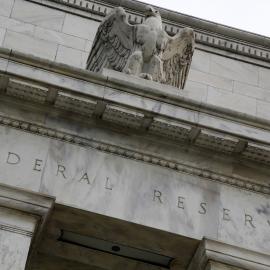To the Editor:
As Zanny Minton Beddoes observes ("From EMU to AMU? The Case for Regional Currencies," July/August 1999), recent "financial turmoil has shattered the semi-fixed exchange rate regimes that much of the developing world once favored." Absent extensive capital controls, the only viable regimes appear to be a (managed) float or a hard peg to one or another of the world's leading currencies. Ruling out capital controls, Beddoes argues for the hard-peg option on the ground that it provides a developing country with readier access to international capital flows.
Recent experience with massive bouts of lending to Latin America, East Asia, and Russia -- especially by consortia of international commercial banks -- casts doubt on the prodevelopment virtues of unfettered international capital flows. As repeated debt moratoriums and forced restructurings demonstrate, diligence was altogether lacking in many instances. Lenders were too eager to lend and borrowers too eager to borrow. Leveraged speculation in real estate and common stocks and the expansion of manufacturing capacity in sectors with an incipient oversupply led to unsustainable bubbles. The consequences -- for government leaders, for domestic borrowers, and for families that had to live through subsequent severe recessions -- were painful.
Despite this record, I share Beddoes' belief that ready access to foreign capital assists development over the long haul. But is it clear that a floating exchange rate inhibits such access?
Canada has had a floating currency for many years now, yet it has hardly suffered from a dearth of foreign capital. Mexico has a floating currency but clearly enjoys (and sometimes suffers from) substantial capital inflows from a wide range of foreign creditors and investors.
Although a floating currency imposes an exchange-rate risk on either borrower or lender, this risk can usually be hedged through the forward market or other devices. Most important, a floating currency allows a country to tailor monetary policy to particular circumstances.
Beddoes predicts that "By 2030 ... the euro will be used from Brest to Bucharest, and the dollar from Alaska to Argentina -- perhaps even in Asia." She may be right. But achieving the dollar part of her forecast will require some doing. Of the 16 largest countries in the western hemisphere (other than the United States), only one -- Argentina -- currently pegs its currency rigidly to the dollar.
Argentina has probably benefited from the dollar-peso peg. But it is a special case. With a history of profligate fiscal and monetary policies, it needed -- and perhaps still needs -- a currency straitjacket. Countries not handicapped with such an extreme inflationary legacy would do better under a managed float.
Henry N. Goldstein
Professor Emeritus of Economics, University of Oregon
